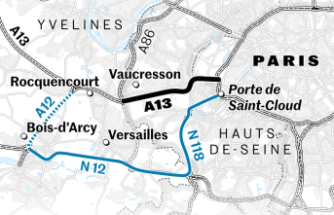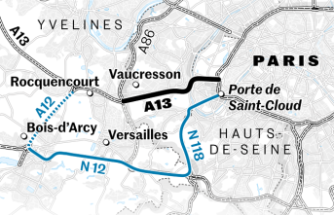Long waiting times are often caused by lack of time and staff: Ärztinnenund doctors are burdened with routine tasks, workforce is too thin. If medical practitioners lack time or expertise, y could receive support from artificial intelligence in future, more specifically through machine learning. With help of computer-aided diagnostics (CAD), doctors, for example, could detect neuroAugenkrankheitenund neurological diseases more quickly. This suggests two studies which appeared on Monday in prestigious journal NatureMedicine.
The investigations are devoted to so-called imaging process, which produces image data from patient or patient – this includes, for example, Computer tomography (CT). And both studies nutzenDeep learning, that is, complex form of machine learning, which is particularly similar to demmenschlichen brain: The computers are processed with data gefüttertund process m independently on several lower levels – DaherDeep learning – until In end a result comes out, for example a first diagnosis.
An algorithm that is partly better than expertsIn first study (Nature Medicine: De Fauw et al., 2018), a team of researchers undForschern London-based company DeepMind, Institute for Ophthalmology of University College London DerAugenklinik Moorfields, has Deep-learning Methodefür Optical Coherence tomography (OCT). OCTs buttons retinal or eye background with light and create high-resolution images. The researchers have found an algorithm that examines images on 53 diagnoses and categorizes findings according to urgency of treatment.
Computer learned from well 15,000 retinal scans, which indicate characteristics of which diseases. Then researchers testetendie algorithm of images of just under 1,000 or Patientinnenund patients. The computer program proved to be as good as five best of eight experts: although y had additional information wiefrühere patient findings available, y were only par with ihrenEinschätzungen with algorithm. However, it does not always take a Oct to detect an eye disease, even an ordinary eye background mirroring may suffice.
One of main authors of study is German scientist Olaf Ronneberger, a member of DeepMind and an extraordinary computer science professor at at Leipzig Freiburg. He is known for developing a deep learning architecture called U-Net, which was also used in study. "There are too wenigeExperten that OCTs can evaluate," says Ronneberger. This leads to delayed Enablesa treatments that could save patients from blindness. In future, algorithm should help, but first more clinical research is needed.
The second published study (NatureMedicine: Titano et al, 2018) Behandeltdie evaluation of brain scans to detect abnormalities such as strokes, Blutungenoder fluid accumulation. Researchers from NewYorker Icahn School of Medicine and University of Boston made computers 37,200 skull CTS using deep Learninganalysieren and classified as "critical" or "uncritical". The algorithms Anschließendmussten doctors to present images for findings according to urgency, in technical language is called DasTriage. So far, doctors are taking this sort of order mselves.
The aim of study authors is not that algorithms create diagnoses. Because machine learning generates bisherhäufig too many false hits, so healthy individuals are diagnosed as sick. Instead, system should display Synedra view in urgent cases faster for diagnosis. "So we relieve need for extremely accurate models Undbetonen instead strength of method: Speed," Write DieAutoren. Instead of a patient sitting in waiting room for minutes or hours until a doctor has reached him to evaluate images, whole could alert radio login in more acute cases. Of course, even in more serious cases, such as in case of a stroke, patients are prioritized. The use could be interesting but for example supportive for medical practitioners in country or at night when little staff is on site.
Date Of Update: 14 August 2018, 12:00











